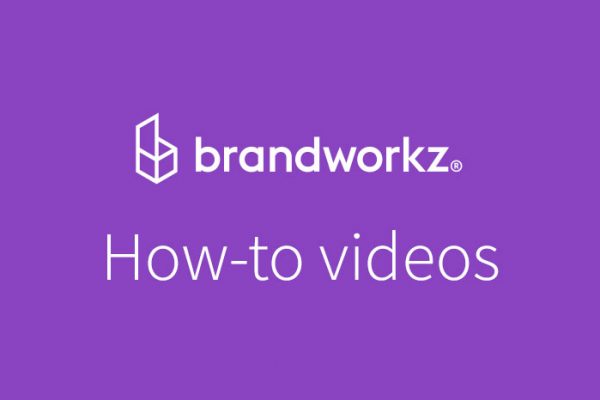Brandworkz Founder and CEO Jens Lundgaard sat down with Jeremiah Karpowicz of The DAM Coalition to discuss Brandworkz and the future of digital asset management software.
We had an opportunity to talk with him about their software and how it can and has impacted individuals and companies across the world. Their platform is more than a system that stores and organises assets and could completely change the way people think about digital asset management.
Can you tell us a little bit about Brandworkz?
Brandworkz is a specialist provider of cloud-based brand management software. Organisations like Gold’s Gym, Red Bull Racing, Pfizer and Aetna use the system to ensure brand consistency and make their marketing operations more effective.
We have extensive brand management software functionality, but “traditional” DAM in itself doesn’t assist brand and marketing operations to a sufficient extent, so for most of our clients the Digital Asset Management aspect is the engine which underpins a lot of the other functionality and benefits of our system.
How does the software work?
With Brandworkz, clients maximise the productivity of their marketers and agencies by offering a self-service, web-based marketing portal to search for digital assets and educate them on brand guidelines. Brandworkz also automates approval workflows and the customisation/localisation of marketing materials while ensuring compliance with a company’s brand guidelines and positioning.
DAM has evolved to be and mean so much more than a system that helps companies stay organised. How has this evolution changed the client’s expectations?
Staying organised is still a very important part of how clients perceive Digital Asset Management. However, clients expect much more than just a library. They want a system that can automate repetitive low-level tasks such as the distribution of images, increase efficiency by accelerating communication processes, align internal and external audiences behind a brand positioning, accelerate brand education and shrink the cost of marketing operations.
But most important of all, they expect simplicity and ease of use. Our end-user is not usually a technical person, therefore the system must be intuitive to use and give a good user experience. Our focus at Brandworkz is heavily on user interface and user experience. If it isn’t intuitive, it won’t get used and clients will not see a good return on their investment in digital asset management software.
Are people expecting too much from their DAM system?
On the contrary, I think clients should expect more of their Digital Asset Management software. Based on what we have seen and the feedback from clients and prospects, many people are being short-changed by their DAM systems because they are clunky to use, unintuitive to navigate and difficult to manage. In addition, what we consider to be basic functionality is often missing – especially if organisations have had bespoke solutions built for them in the past – eg
- Automatic image and video transcoding
- Hierarchical metadata
- SAML single sign-on
- Multi-language
- Brand Guidelines (as CMS pages) alongside digital assets to educate users about what the brand stands for and how to use the digital assets
- A simple upload and download
Brandworkz Digital Asset Management software is integrated with further modules such as Web-to-Publish and Approval Workflow so that the end-user gets a holistic brand management tool and sees improved ROI on their investment.
The User Experience aspect of DAM is often overlooked in favour of functionality…why do you think that is?
Digital Asset Management software is often conceived and built by techies, not by branding and marketing people who understand what non-technical end-users need. In addition, vendors often add functionality, under pressure from potential clients, in order to win a job and therefore don’t spend enough resources improving what they already have.
One of our company values is Inventive Simplicity and our goal is to become the clear leader in simplicity and usability for brand/marketing management software.
Brandworkz is amongst the leaders in Brand/Digital Asset Management features and functionality but our clear competitive advantage is in usability. Clients are switching to us from other software vendors because our interface simple and elegant to use. This is incredibly important in encouraging people to use the software, especially when they are brand-led, creative or marketing people who will often reject something purely on the grounds that it’s ugly and un-intuitive.
Should people be looking to balance their needs for functionality and UX when they are choosing a DAM, or should they dedicate themselves to get a better understanding of the system they are or will be using?
Both are equally important. Clearly your system needs to solve your business issues and the software must execute complex tasks, but make sure you choose one navigable by non-technical people, and that the experience of using it easy.
If the user base will be a close-knit group of production or graphics professionals, functionality will win out. But in all other cases, I believe that an intuitive UI/UX should be the number one concern.
Specifically, how can Brandworkz help a company that is struggling with their DAM system or because they don’t have one?
We provide consultancy to our clients at the start of a project where we look at their business processes and make suggestions on how to improve these.
Next, we configure a client’s Brandworkz system to suit their company and business, making recommendations about which additional Brandworkz modules will give the best result and ensuring it looks on-brand. We don’t force a one size fits all solution on our clients, although we can get a small business up and running with Brandworkz quickly.
Sometimes we will work on a pure consultancy basis where the outcome is a report on the clients’ needs, rather than a software purchase. There are other consultants and experts offering this kind of service too and I would wholeheartedly recommend it if an organisation isn’t quite clear on what their requirements are and how to get the most out of their Digital Asset Management software.
What are some of the major developments you’ve been a part of that have helped shape and/or change the industry?
We can’t claim to have started the DAM industry, but we were certainly one of the very early pioneers of our niche, Brand/Marketing Management Software.
The company and product were really born out of my frustration during the years I worked for some large branding agencies in the mid-nineties where the implementation of large branding projects and re-brands were an absolute nightmare. Its one thing designing a great brand identity or marketing campaign, but it’s a whole different ball game getting this implemented consistently on a global basis in a myriad of ways.
At the time the internet was in its infancy (we were tricked out with the latest 28,8kbit/s dial-up modem!) so most of the early work was on CD-ROMs, but I could see that the Internet would become a viable mechanism and I set out to develop “an app for that” as you would say these days.
Over the past couple of years, some of the “pure-play” DAM vendors have been busy trying to morph into brand or marketing platforms – and as we have been doing that for over 15 years already with Brandworkz, I would say this is the main way we have led the industry.
What major changes do you see coming up for the DAM industry as a whole? (And how is Brandworkz a part of that?)
I think the future will be bright but also challenging for the DAM industry.
On the bright side, the continuing increase and the ease with which the world can capture and generate images, videos and documents, and the billions of visual assets resulting from this means that DAM will be needed more than ever to stop organisations drowning in a sea of unnamed, unclassified assets.
The challenge is that most DAM systems will not automate the classification of assets – manual labour and diligence is needed. Therefore, DAM systems risk becoming asset graveyards where users either can’t find anything or get overwhelmed with irrelevant assets even more than ever.
DAM in the “traditional” sense – i.e. a system which will store, organise, transform and distribute visual assets – is becoming commoditised. There are inexpensive options aplenty if you have fairly basic needs, and there is even competition from free offerings that could be described as DAM systems like Google Picasa and Flickr.
Couple this with the fact that traditional DAM simply isn’t enough on its own any longer. As an example, Digital Asset Management is just one component of what makes a marketing department operate efficiently.
Therefore DAM vendors will either have to expand their remit to become Brand, Marketing or Publishing platforms, or they will need to integrate with other related apps, becoming the glue between the upstream marketing/publishing process (Adobe CS, cameras, etc) and the downstream delivery to digital channels (e.g.YouTube, Double-click, Pardot, Eloqua, Salesforce, etc).
I’m personally very excited about the future. It’s no secret that a fast-changing world and IT landscape is stressful and challenging, but it also creates great opportunities if we can change with them. I will certainly make sure that Brandworkz is part of this change!



